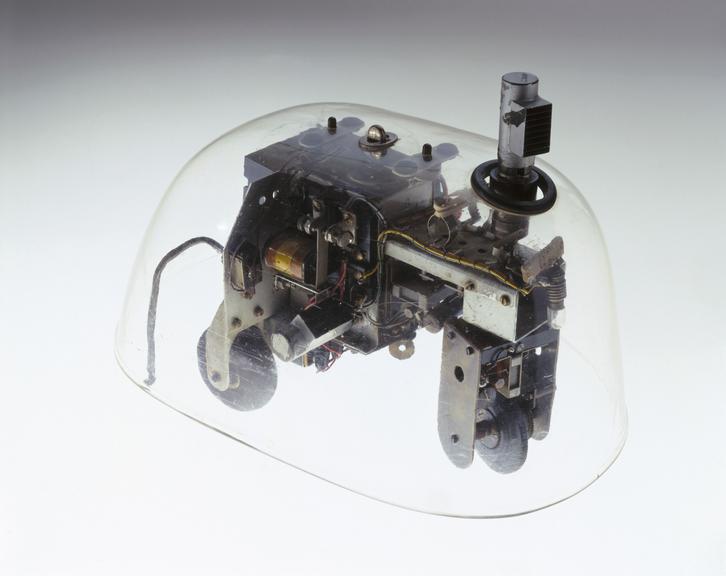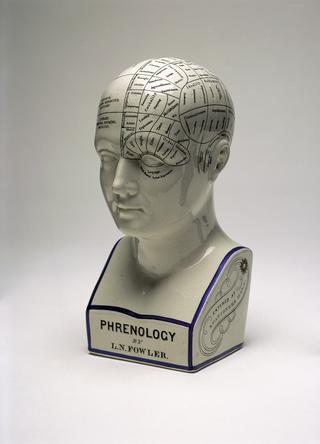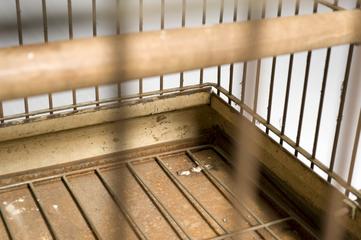
Cybernetic tortoise, developed to help with studies on brain function
- maker:
- William Grey William Grey

Cybernetic tortoise, with photo-electric cell, developed to help with studies on brain function, invented and made by William Grey Walter, at the Burden Neurological Institute, Bristol, England, 1950-1952
A landmark both in robotics and cybernetics (the science of communication and control systems), the tortoise invented by William Grey Walter was an 'artificial animal' designed to investigate brain functions. It was devised at the Burden Neurological Institute in Bristol, a unique centre combining experimental and clinical work, established in 1939. A favourite at the science exhibition of the Festival of Britain, held at the Science Museum, under the name Machina speculatrix, was designed to behave like a simple animal. It was wired to display certain characteristics: it travelled around floors, manoeuvred to avoid obstacles and slopes, and was equipped with a photo-receptor so that it would approach moderate light but avoid bright illumination.
Details
- Category:
- Psychology, Psychiatry & Anthropometry
- Object Number:
- L2000-4441
- Materials:
- aluminium alloy, brass (copper, zinc alloy), copper (alloy), steel (metal), metal (unknown), chromium plated, tin plated, electrical components, plastic (unidentified), acrylic (perpex TM), rubber (unidentified) and paint
- Measurements:
-
Overall: 260 mm x 260 mm x 360 mm, 2.52 kg
- type:
- photocell, cybernetic tortoise, psychology and neurology
- credit:
- UWE Bristol




